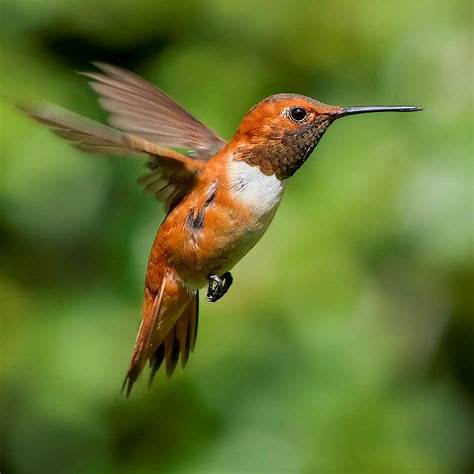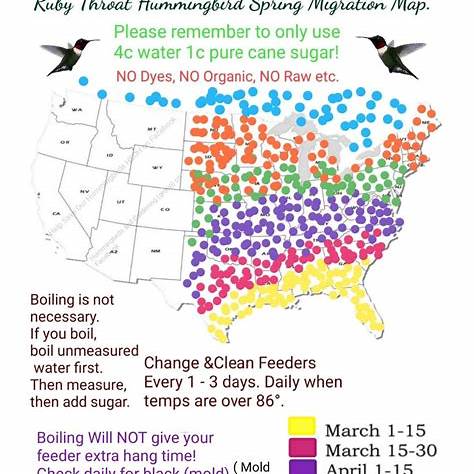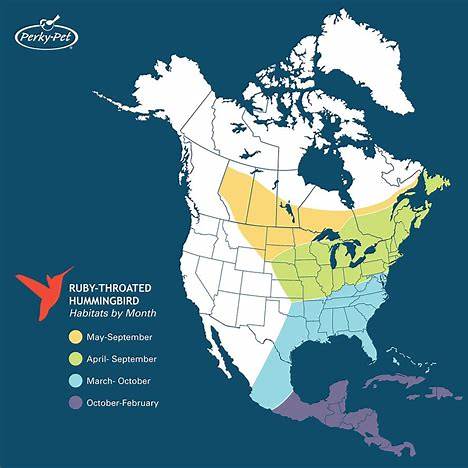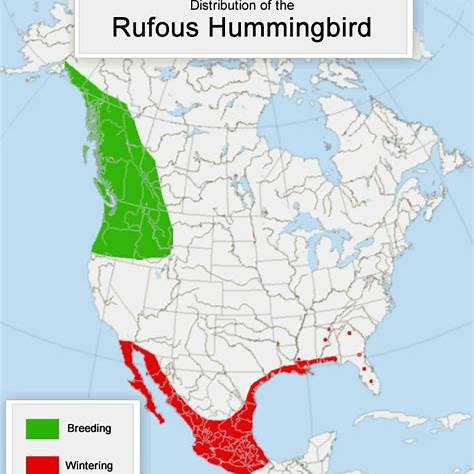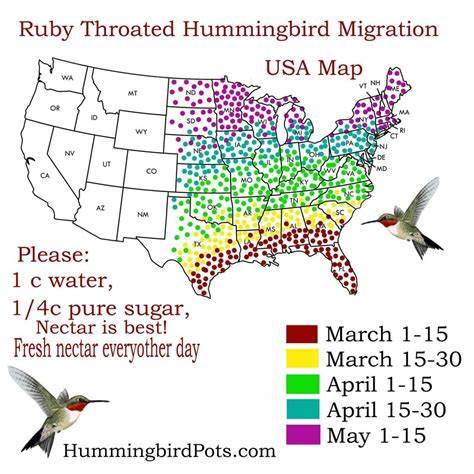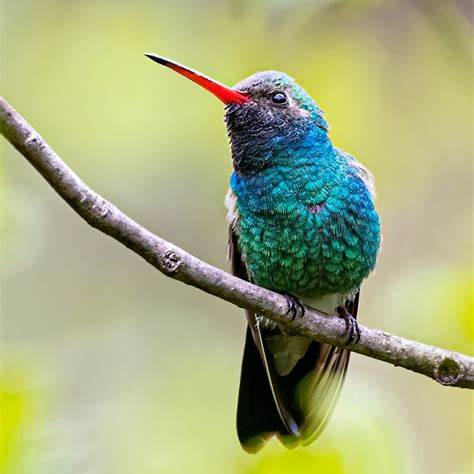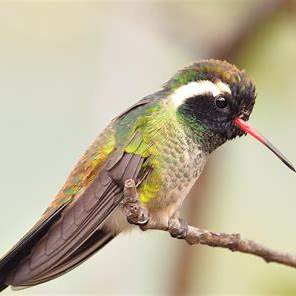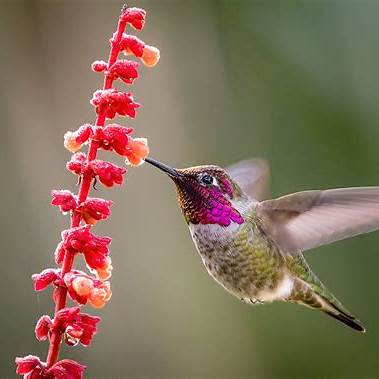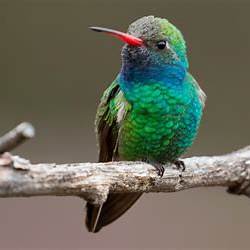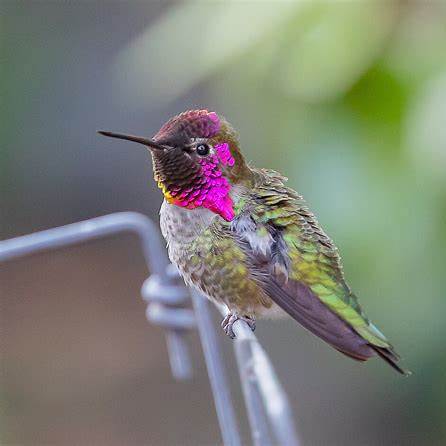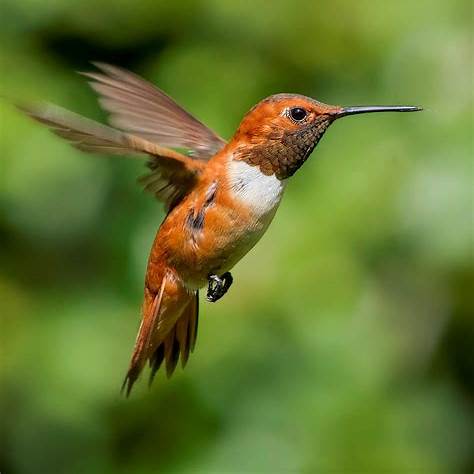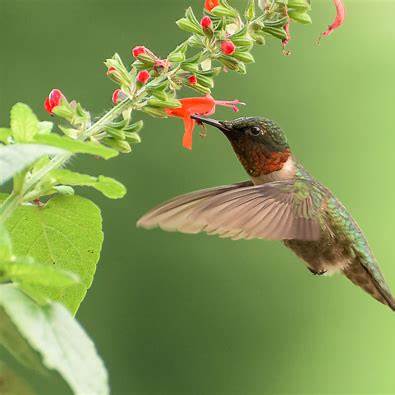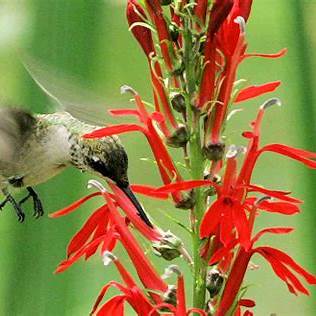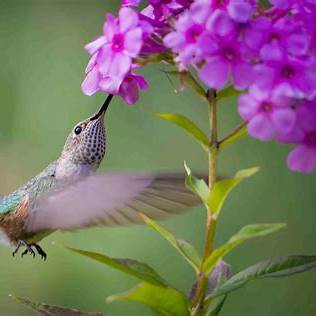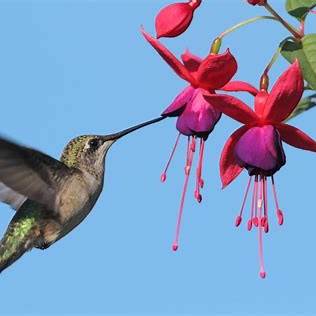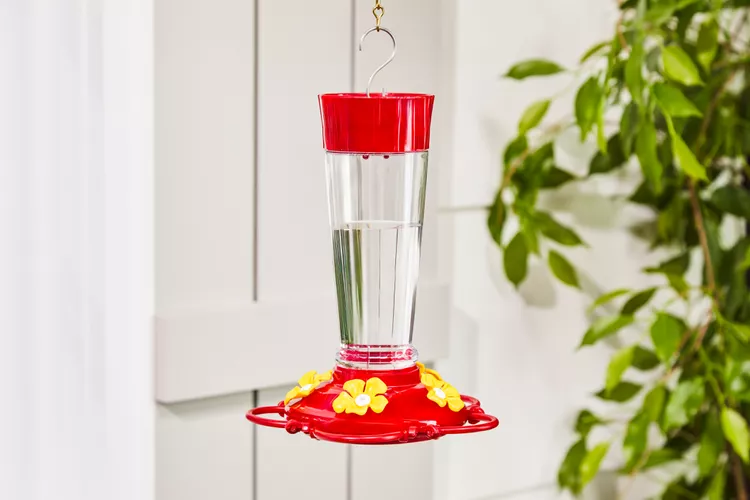As spring unfolds, West Michigan is witnessing the vibrant return of hummingbirds, marking the commencement of their annual migration from winter habitats in Central America and Mexico to breeding grounds across North America. The ruby-throated hummingbird (Archilochus colubris), the most prevalent species in Michigan, has been observed in the state’s Lower Peninsula, signaling their northward journey’s progression.
Migration Patterns and Arrival
Hummingbirds typically embark on their northward migration in late winter and early spring, with ruby-throated hummingbirds reaching Michigan by late April to early May. These tiny birds travel solo, covering up to 23 miles daily, and sometimes up to 500 miles when crossing large bodies of water like the Gulf of Mexico. Their migration is fueled by the search for abundant nectar sources and suitable breeding habitats. (Check out link: Hummingbird Central – Migration Map & Sightings)
Species Observed in Michigan
While the ruby-throated hummingbird is the most common in Michigan, birdwatchers may occasionally spot other species, including:
- Rufous Hummingbird (Selasphorus rufus): Generally found west of the Rocky Mountains but occasionally seen in Michigan.
- Anna’s Hummingbird (Calypte anna): A stocky bird with green and gray-brown plumage; males have a bright-pink iridescent head and throat.
- White-eared Hummingbird (Hylocharis leucotis): Identified by a distinctive white stripe over the ears.
- Broad-billed Hummingbird (Cynanthus latirostris): Males are bright green with a blue throat patch and a black-tipped red bill.
- Mexican Violetear (Colibri thalassinus): An uncommon visitor, occasionally spotted in Michigan.
Check out more bird information on: Audubon Society – Hummingbirds
Preparing Your Garden for Hummingbirds
To attract and support migrating hummingbirds:
- Set Up Feeders: Place feeders filled with a solution of four parts water to one part sugar (avoid red dye) in your garden. Clean feeders regularly to prevent mold and fermentation.
- Plant Native Flowers: Incorporate nectar-rich plants like bee balm, columbine, and trumpet vine to provide natural food sources.
- Provide Water Sources: Shallow fountains or birdbaths offer drinking and bathing spots.
- Avoid Pesticides: Chemicals can harm hummingbirds and reduce insect populations, a vital protein source for these birds.
Tracking Migration
Bird enthusiasts can monitor hummingbird migration through interactive maps provided by organizations like Hummingbird Central, which updates sightings as the birds progress northward. Please comments with updated information and sightings!
https://catchmarkcommunity.com/category/latest-news








